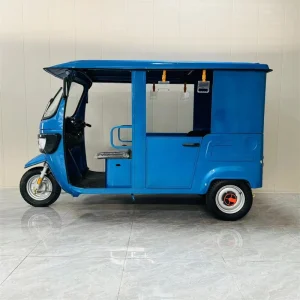북미 저속 차량 2030년까지 시장 가치 $8,020.0 백만
소개
“북미”라는 제목의 최근 보고서 저속 차량 2030년까지 시장 가치는 8,020.0백만 달러"는 지역의 시장이 저속 차량 (LSV) 배출 규제, 관광, 골프 코스와 커뮤니티 차량의 인기와 같은 요인에 의해 가속화되고 있습니다.이 기사는 결과를 분해합니다: 성장 지표, 주요 차량 유형, 추진 및배터리 트렌드, 응용 프로그램, 그리고 앞으로 가는 길이 어떻게 보이는지.이웃이 어떻게 되는지 궁금해하면 EV 채택은 이동성 풍경을 형성하고 있으며,이 보고서는 밝은 통찰력을 제공합니다.

I. 북미의 주요 인물 저속 차량 2030년까지 시장 가치 8,020.0백만 달러"보고서
1.1 시장 가치 &예상 성장
보고서에 따르면 북미 저속 차량 시장은 2030년까지 약 5,703.2백만 달러에서 8,020.0백만 달러로 성장할 것으로 예상되며, 예측 기간 동안 약 5.8%의 연간 성장률 (CAGR)을 반영합니다.이 강력한 성장은 수요가 증가하는 것을 강조합니다. 저속 차량 주거 공동체에서 레크리에이션 및 유틸리티 용도까지 다양한 분야에서 시장 성장.
1.2 주요 차량 유형 &주식
골프 카트는 유형 세그먼트를 선도하고 있으며 북미의 약 40%를 차지합니다. 저속 차량 시장.이 카테고리 내에서 2석 골프 카트는 특히 지배적입니다.다른 유형은 상업용 다른 다른 유틸리티 차량, 산업용 유틸리티를 포함합니다. LSV는그리고 개인 저속 차량.골프 카트의 인기는 대부분 미국과 캐나다의 골프 코스의 높은 수에 의해 추진됩니다.
1.3 추진 &배터리 기술 트렌드
시장은 시산 및 리시시엄 이온 배터리 시스템을 모두 갖추고 있으며, 리시엄 이온은 에너지 효율성이 높고 환경 위험이 낮기 때문에 배터리 세그먼트의 거의 60%를 차지합니다.전기 추진이 더욱 선호되는 것은 북미의 핵심 운전자입니다. 저속 차량 2030년까지 시장 가치는 8,020.0백만 달러입니다.
II.드라이버 &Surge 뒤에 있는 시장 역학
2.1 규제 압력 &배출 표준
더 엄격한 배출량 표준과 환경 영향을 줄이는 길은 호텔, 리조트, 산업 시설 및 지방 사회가 전통적인 가스 작동 카트와 유틸리티 차량을 전기 차량으로 대체하도록 압도하고 있습니다. LSV는미국 국립 고속도로 교통 안전 관리 (NHTSA)는 최소 안전 장비로 공공 거리에 특정 저속 차량을 허용하는 표준 (표준 500 등) 을 도입했습니다.
2.2 레크리에이션 &관광 부문 수요
골프 코스 (특히 미국, 캐나다, 멕시코)는 LSV의 주요 사용자입니다.예를 들어 멕시코에서 많은 고급 리조트는 유리한 관광 성장과 국제 방문객 수에 의해 자신의 재산 내에서 레저를 위해 저속 차량을 배치합니다.골프 토너먼트와 골프 클럽 확장도 도움이 됩니다.
2.3 이웃 &단거리 이동성 추세
이웃 EV 및 개인 저속 차량 점점 더 짧은 여행에 사용되고 있습니다. 쇼핑몰, 체육관, 레스토랑, 학교, 특히 노인들에 의해.낮은 배출량, 낮은 최고 속도 및 낮은 유지 보수 비용의 특징은 매력적입니다.북미 저속 차량 2030년까지 시장 가치 8,020.0백만 달러는 이러한 사용 사례에서 강력한 성장을 가정합니다.
III. 도전과 제한
3.1 건전지 &재료 비용
리리리리리리리리리리리리리리리리리리리리리리리리리리리리리리리리리리리리리리리리리리리리리리리리리리리리리리리리리리리리리铅산은 저렴하지만 무게, 수명, 환경 영향에 대한 단점이 있습니다.이러한 타협은 차량 가격과 총 소유 비용에 영향을 미칩니다.
3.2 규제 및 도로 사용 장벽
기준이 허용하더라도 LSV는 공공 거리에서는 제한이 남아 있습니다 (속도 제한, 장비 표준, 법적으로 운전할 수 있는 곳).회사는 다양한 주법을 통해야 합니다.조명, 브레이킹 등과 같은 안전 요구 사항은 크게 다릅니다.
3.3 소비자 인식 &사용 사례 제한
많은 소비자들에게, LSV는 주요 교통보다는 레저 또는 초등 교통을 위해 더 많이 볼 수 있습니다.범위, 속도 (낮은 최고 속도), 혼합 교통 설정에서 내구성 또는 안전에 대한 인식은 장벽의 일부입니다.
IV. 지역 하이라이트 &주요 플레이어
4.1 멕시코의 신흥시장
멕시코에서는 리조트와 호스피탈리티 산업의 흡수가 수요를 높이고 있습니다.골프 코스, 특히 국제 대회를 개최하는 코스는 투자하고 있습니다. LSV는유리한 환율과 국제 관광의 성장은 긍정적으로 기여합니다.
4.2 캐나다 &미국 골프 코스 &유틸리티 성장
미국과 캐나다에서는 골프 카트 함대가 확장되고 있습니다.OEM들은 더 고급 배터리 시스템과 안전 기능을 갖춘 새로운 모델 (예: 다양한 좌석과 속도를 가진 이웃 전기 차량) 을 소개하고 있습니다.주요 제조업체는 Textron Inc., Club Car, Yamaha Golf Car, American Landmaster를 포함합니다.
V. 미래를 바라보기: 2030년까지 기대할 것
많은 새로운 모델에서 리리리엄 이온 배터리 솔루션의 지속적인 침투, 리드 산을 대체 타이루이 그룹.
골프 카트와 유틸리티 LSV의 더 고급 기능: 더 나은 안전, 더 많은 카테고리 (상업용 골프 더, 산업용 유틸리티), 더 많은 구성 옵션.
강력한 정책과 배출 규제 집행은 오래된, 덜 깨끗한 모델의 교체를 촉진할 것입니다.
관광과 환대가 확장함에 따라 멕시코와 라틴 아메리카에서 더욱 성장했습니다.
배터리 성능의 혁신, 아마도 저렴한 제조, 아마도 더 많은 EV-만 LSV는.
결론
북미의 예측은 저속 차량 2030년까지 8,020억 달러의 시장은 단순한 숫자가 아니라 커뮤니티, 리조트 및 산업 사용자가 단거리 이동성에 대해 생각하는 방식의 변화를 나타냅니다.성능, 비용, 규제 및 환경 목표를 균형 잡고, LSV는 부문 (골프 카트, 개인 유틸리티 차량, 이웃 EVs강력한 성장을 위해 준비되어 있습니다.추진 기술 추세 (전전전기를 추추진 기술 추세, 배터리 혁신 및 규제 준수 등과 일치하는 이해관계자들은 앞으로 몇 년 동안 가장 많은 혜택을 얻을 것입니다.
